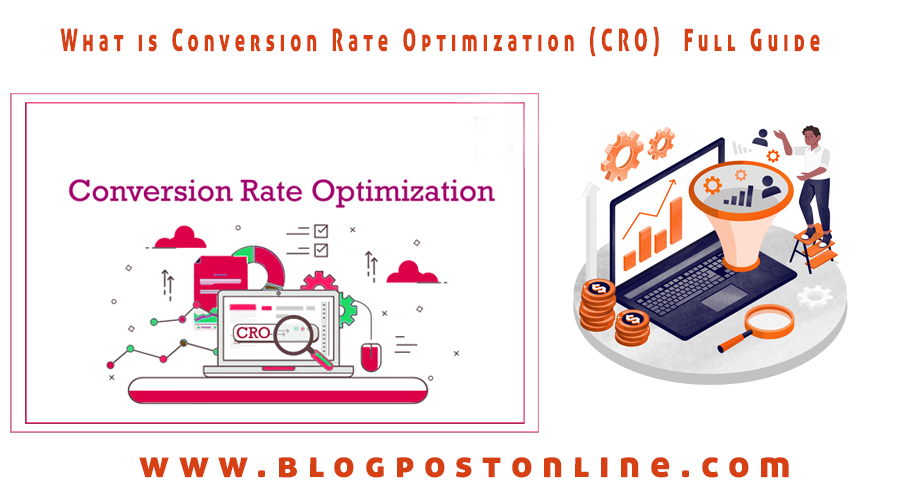Conversion Rate Optimization (CRO) is the secret sauce of successful digital marketing. In this comprehensive guide,
we break down CRO, explaining what it is and how it can transform your online business. Discover the strategies, tools,
and best practices that can boost your website’s performance and turn visitors into loyal customers. Uncover the power of CRO and take your digital marketing game to the next level.
Conversion Rate Optimization (CRO) is a critical process in digital marketing aimed at increasing the percentage of website visitors or users who take a desired action. The desired action can vary depending on the specific goals of a website or online business, but common examples include:
- Making a purchase
- Signing up for a newsletter
- Requesting a quote
- Filling out a contact form
- Downloading an e-book or whitepaper
- Subscribing to a service
- Clicking on specific links or buttons

CRO involves systematically optimizing various elements of a website or digital platform to encourage users to complete these desired actions. It’s all about making the user experience smoother,
more engaging, and ultimately more persuasive. Here are some key components and strategies of Conversion Rate Optimization:
- A/B Testing: This involves creating multiple versions (A and B) of a webpage or a specific element (such as a call-to-action button) and testing them to see which one performs better in terms of conversion rates. The better-performing version is then adopted.
- Landing Page Optimization: Focuses on improving the effectiveness of landing pages, which are often the entry points for users from advertising campaigns. Content Optimizing elements like headline, copy, images, forms, and layout can significantly impact conversion rates.
- User Experience (UX) Design: Creating a user-friendly and visually appealing website is essential for keeping visitors engaged and encouraging them to convert. This includes optimizing page load times, navigation, mobile responsiveness, and overall design aesthetics.
- Call-to-Action (CTA) Optimization: Crafting persuasive and visually appealing CTAs can encourage users to take the desired action. CTA buttons or links should be clear, strategically placed, and use compelling language.
- Content Optimization: Ensuring that the content on your website is relevant, valuable, and addresses user needs can help increase conversions. Content should be clear, concise, and speak to the user’s pain points and desires.
- Form Optimization: If forms are a part of your conversion process (e.g., sign-up forms or contact forms), make them as user-friendly as possible by reducing the number of fields and offering clear instructions.
- Trust Signals: Displaying trust signals such as customer reviews, security badges, and guarantees can instill confidence in users and boost conversions.
- Customer Journey Analysis: Understanding your audience’s journey on your website can help you identify friction points and areas where users drop off. By analyzing this data, you can make targeted improvements to enhance the user experience.
- Analytics and Data Tracking: Implementing tools like Google Analytics can provide valuable insights into user behavior, allowing you to make data-driven decisions and continually refine your CRO efforts.
What is Chart Pattern Technical analysis Best Trading Stategy?
CRO is an ongoing process, as user behavior and market conditions change over time. By regularly monitoring and optimizing your website or digital platform, you can improve your conversion rates and, ultimately, the overall success of your digital marketing efforts.